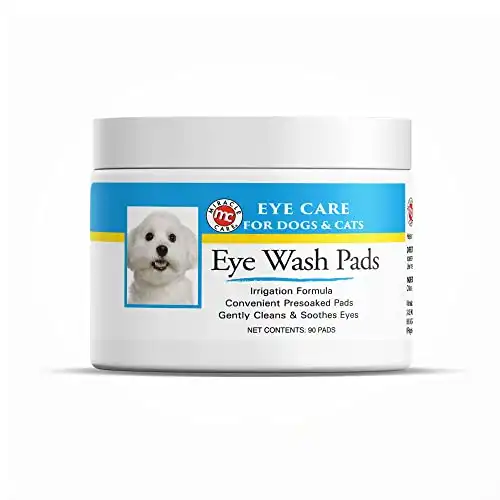Maltipoo Colors (with pictures) Coat Color Guide and Photo Gallery
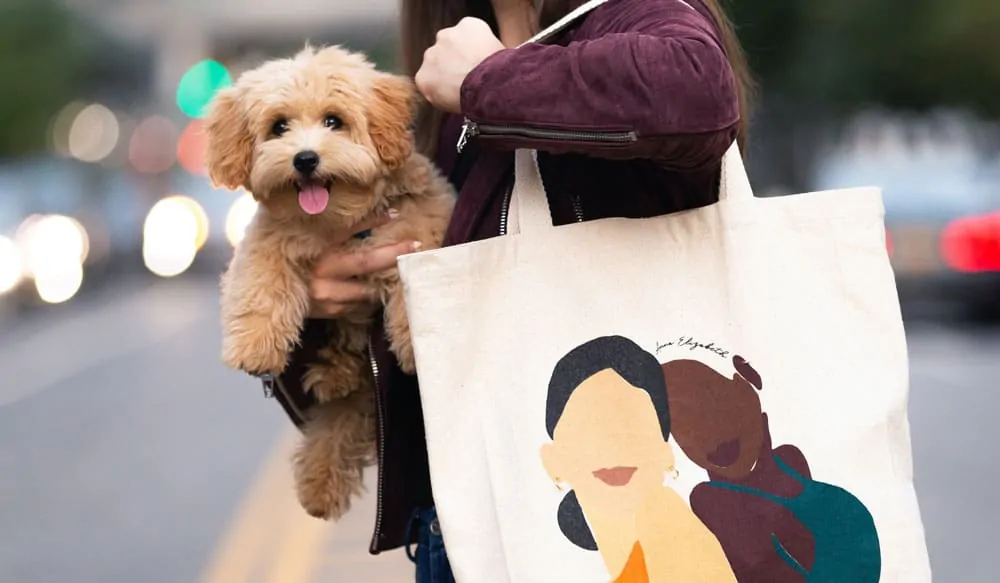
The Maltipoo is a Maltese X Poodle mixed breed dog. They can be teacup sized, intelligent, and non-shedding. Their fur is famous for its soft feel and allergy-free nature.
There are dozens of different coat combinations for the Maltipoo. Their coats are medium-long and usually wavy or curly.
These glamorous (sigh… I’m not too fond of the phrase, but they are… designer dogs) are also whip-smart and super friendly (sometimes a Maltipoo will growl or bark – but this can be easily remedied).
Why do Maltipoos come in set colors?
The Poodle coat gives the non-shedding and low allergy attributes – and the combination of the Maltese and Poodle hair must be felt to be believed. So soft!
The immense variety of Maltese coat colors comes from the two parent breeds. An AKC standard Maltese will only have three three coat colors – white, white with lemon, white with tan.
Poodles, on the other hand, are known for a considerable variety of breed standard coat colors. Poodle coats can be apricot, black, brown, cream, gray, red, white, and beige.
Maltipoo coat colors in hot demand include
- White
- Black
- Tan
- Cafe Au Lait
- Coffee
- Red
- Apricot
- Silver
The most common Maltipoo coat colors are white and cream. Parti (two-color) Maltipoo’s are also available.
White Maltipoo

A pure or clear white Maltipoo is the most common color seen. This is because the most commonly occurring color for a Maltese is white. It is also a reasonably common hair color for Poodles. The genes that express white coats are strong and dominant.
White coats in dogs can be caused by a complete lack of pigment cells in the skin. If the Maltipoo parents have little or no pigment, you would expect your Maltipoo to also have a white coat.
White is also the most commonly seen coat color when there are two or more colors in a coat. Parti (two-color) coats almost always have white or near white as one of the colors.
It is a misconception that the white Maltipoo hair is any different in softness from the other shades. In a blind test, you would struggle to identify a Maltipoo hair color by touch alone. All coat colors can be equally soft. One of the easiest ways to ensure a soft coat is to pick the right type of Maltipoo food.
Cream Maltipoo

The cream color Maltipoo is right up there in popularity. It is one of the more common coat colors seen for this cross-breed. Need proof? Jump on the #maltipoo hashtag on Instagram, and you will see SO many white and cream-colored dogs.
They occur more frequently than any other Maltipoo coat shade.
Again there is no massive difference in coat type OR coat softness whether the Maltipoo coat is light or dark. You can have straight, wavy, or densely curly cream Maltipoos. The curlier the cream hair – the lower the shedding.
An issue that you will encounter with lighter color Maltipoo coats is that the hair will stain. The most common place to get a stain is those spots that will meet moisture. Think the mouth, the eyes, and the butt. It can be unsightly – and even result in a stinky Maltipoo.
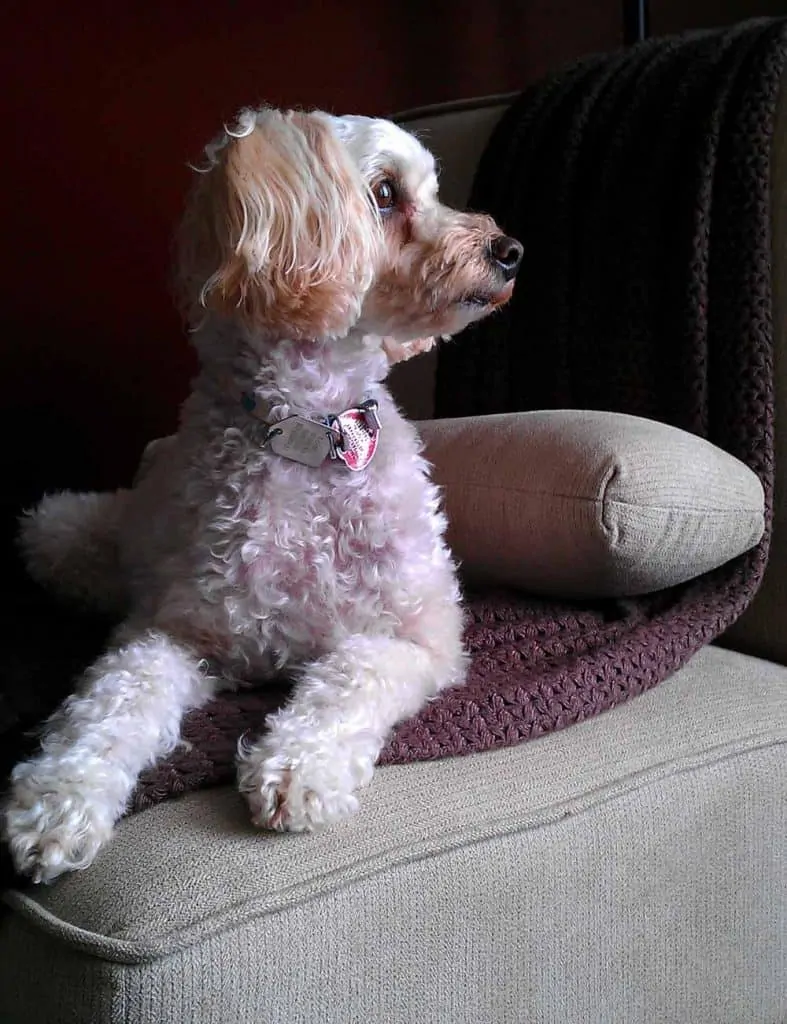
Frequent mini-grooming is necessary to prevent dark eye stains in particular. Maltese dogs AND Poodles get stain around the eyes. It can be relatively easily removed using natural tear stain remover – but if left too long can cause matting and dark staining that is nigh on impossible to extract.
A bit of DIY grooming and a hygienic trim around the butt of your Maltipoo will avoid a messy issue at the other end. If your Maltipoo is not yet toilet trained – some hygiene grooming will save you lots of smelly problems in the house.
(Given that a puppy Maltipoo may poo three times a day… keep the area clean!)
Apricot Maltipoo

Of the in-demand colors of Maltipoo – none remains quite as in demand as the Apricot Maltipoo. These teddy-bear, like non-shedding cuties, are among the most popular Maltipoo coats.
Just like with Labradoodles and Cockapoos – Apricot Maltipoo coats can attract waiting lists and high prices. People are just mad about the Teddy bear appearance. Combined with some appropriate DIY grooming, you can achieve the classic teddy Maltipoo look effortlessly with this coat.

How to DIY groom a Maltipoo for a Teddy bear look
The vast majority of the teddy bear look comes from the face and facial trimmings
Before you get to the face clipping, you should brush and then wash your Maltipoo. Use appropriate shampoo – and a suitable brush like a slicker brush or a blunt-ended comb.
- Use blunt-ended scissors to trim the nose hair into a pyramid.
- Round the furnishings (mustache and facial hair) as much as possible
- Trim the total length of the facial hair if needed (you don’t want a wispy extra long beard!)

There are two different ways that the Apricot Maltipoo coat can change over time.
- Some Maltipoo coats will simply lighten over time. This is not just limited to Maltipoo; it affects many Oodle dogs. Darker coats will disproportionately lighten over time.
- What does that mean? Well, a Brown, Red, or even Apricot coat will be more likely to see some lightening.
- When does it happen? The most common age that a Maltipoo coat will change color is when there is a transition from the Maltipoo puppy coat to its adult coat.
- For a single coated dog like a Maltipoo, the change is less pronounced than for a dog with two coats (e.g., a Husky). You would expect the coat to change anywhere from 6-8 months of age.
- The other lightening or whitening you may see is white spots. The white coat or “no pigment” spots pop up on many dog breeds.
- You can not control them, and the genetic drive to have white spots are strong.
- This type of marking is typically noticeable early on.
- Even a few months in, you might start to see some sites or changes in the coat.

Cafe Au Lait and Coffee Maltipoo Colors
I love the description of these soft light brown Maltipoo’s. Many breeders refer to these colors as Coffee Maltipoo’s and Cafe Au Lait Maltipoo.
The delicious light brown coat gives such a beautiful contrast with the soulful brown eyes. You can’t drink a Maltipoo, but the lush, warm Coffee coat makes you want to!
Of the two shades, the Coffee Maltipoo color is a darker shade. Think light brown.
A Cafe Au Lait (French for “coffee with milk”) is a fancy way to describe a Coffee color Maltipoo that is lighter. Lighter shades of Maltipoo are more common, so many Maltipoo advertised as Coffee color could really be referred to as Cafe Au Lait.
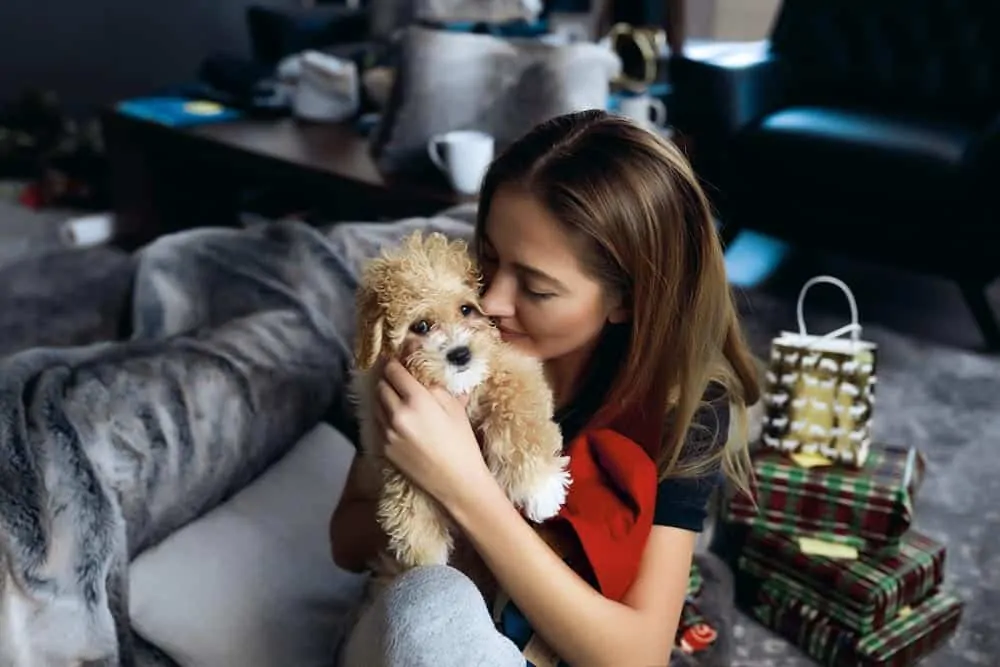
True Brown Maltipoo and Black Maltipoos
A truly brown Maltipoo would be rare to come across. Darker brown Maltipoo do exist – but the color is not seen often. This is because the Maltese breed standard has such bright and light colors.
There are brown and dark Poodles – but such coats often get either diluted or entirely eliminated in the cross-breeding process.
F1b or multigenerational Maltipoo are more likely to have a darker coat. This is because the total percentage of Poodle genetics increased in backcross generations.

So a first-generation (or F1 Maltipoo) is 50% Poodle and 50% Maltese. This means you get a diverse mix of coat colors. It also means a lighter coat is more likely in this original F1 generation. The larger amount of Maltese genes make it so!
A subsequent F1b generation will have a higher percentage of Poodle genetics. Specifically, they have 75% Poodle and 25% Maltese genetic makeup. There are two reasons that one of the most common generations are F1b.
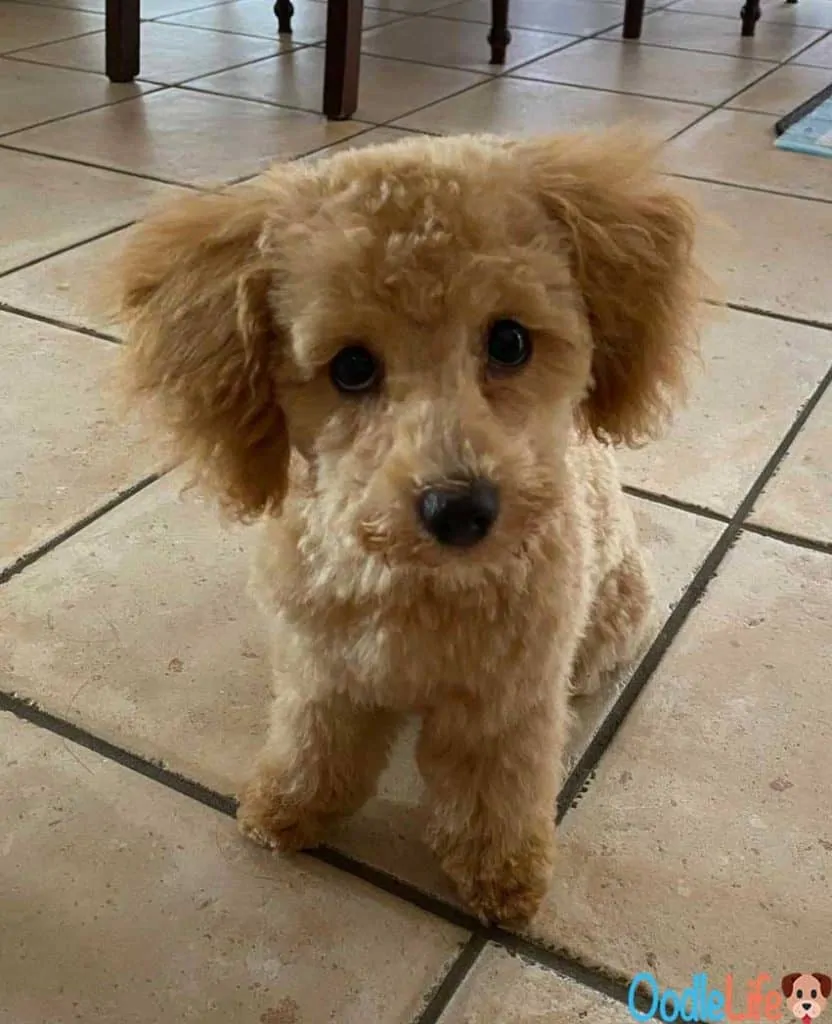
F1b generation Maltipoo tends to shed less due to the increased amount of Poodle genetics.
People seeking darker coats are more likely to find what they are looking for with an F1b cross.
A truly 100% fully black Maltipoo is rare because you need both a black Poodle parent and an ultra-rare Maltese that is either black or carries the right genes to mix with the black Poodle.
Such a dog would be stunning with often dark eyes and dark nose pigment as well. Even truly black Maltipoo are prone to white spots or a touch of hair lightening when the adult coat comes in. (Fun fact? There are rare Black Goldendoodles!)

